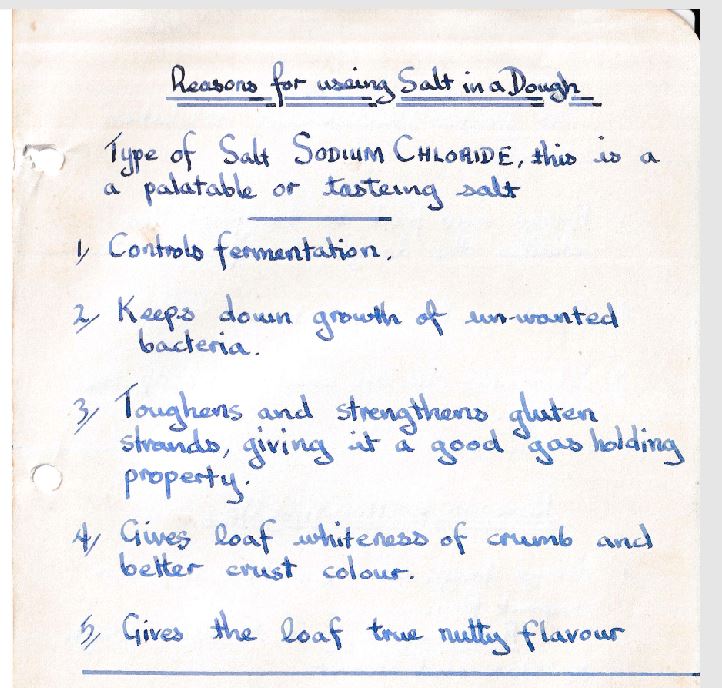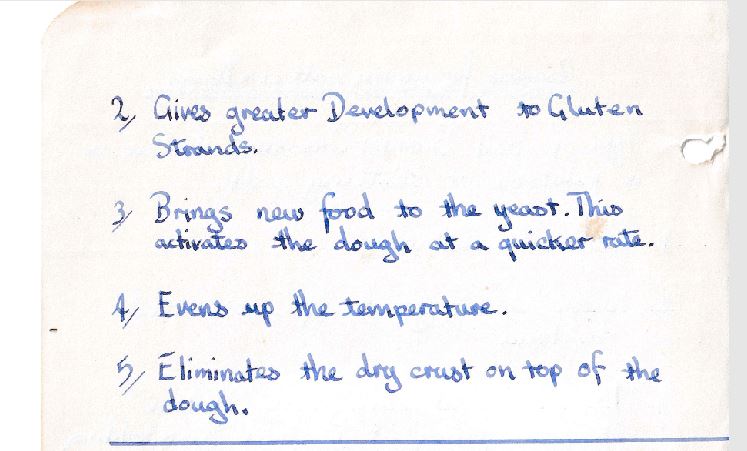Hello,
Long time lurker, first time poster! Thanks for any and all help.
According to the original Tartine book (aka, my bible), I'm supposed to incorporate the polenta, rosemary and roasted pumpkin seeds after the second turn. However, I can really feel the starting-to-develop gluten being ripped to shreds when I do this! I have several questions:
- Am I perhaps being too aggressive with the mixing in of the inclusions?
- In theory, why would you ever wait until ~ 1/4 of the way through the bulk ferment to incorporate inclusions? Aren't you undermining the gluten development, even if you're being as gentle as you can? And/or, aren't you sort of doing a bad job of incorporating the inclusions if you're not mixing thoroughly enough to disrupt the gluten?
- Is lamination the preferred way to incorporate inclusions? Is it always preferred, or does it depend on the particular dough/inclusions?
- Generally speaking, is there a certain amount of gluten degradation, reduction in dough strength, or reduction in oven spring / loaf volume that you just need to accept when you're using inclusions? Intuitively I'd guess the answer is 'yes,' but how much would you say, exactly (5%? 15%?)
I don't have any answers and will be interested to hear what people have to say, but let me just ask: what form was the polenta in...soaked? scalded? fully cooked?
Eric,
The exact relationship in this recipe between water and polenta gave me fits for the first few attempts. The recipe calls for mixing the polenta with boiling water ~ 30 minutes before adding it to the dough. It calls for a ratio of 2:1 water:polenta. The back of the polenta bag calls for 3:1. Both of these turned out to be too much water... which I only realized after scrutinizing the accompanying photo in the book (like some kind of baking forensic investigator) and seeing that the polenta is quite dry-looking when he adds it in. I guess it just comes down to a different variety of polenta. If only he had given instructions based on texture, instead of simply water amount!
Some corn can also take quite a while to absorb water. I'd be inclined to do it at least an hour ahead of time, if not several hours ahead. Also, how the boiling water is added can affect it...for example if the vessel you pour it into sucks heat out of it, and how long it holds the heat. Some recipes calling for a scald (which is what this sounds like to me), recommend preheating the vessel with boiling water before adding the grain and boiling water. This might help the corn to absorb the water faster (and the starches to gelatinize more).
How I add inclusions really depend on the type of inclusions. For solids such as fruits, nuts or seeds my preferred method is during the lamination. I find that I can get a really even distribution by adding during lamination. Recently I have taken a liking to fully developing the gluten at the beginning of bulk fermentation. This has many advantages including the inclusions not interfering with gluten development. Inclusions will reduce oven spring just by their weight alone so it is something you just have to accept. How much it reduces your oven spring will depend on how well you develop gluten early one before they are added, how far you push bulk and now high a percentage of inclusions you include. 20% nuts will weigh down a dough quite a bit compared with 5-10%.
For porridges, do you consider these inclusions? I would tend to add them during the initial mix and so far I have been adding them during a machine mix rather than a hand mix because of how sticky they are. Same thing goes with porridges, they too will weigh down the dough and reduce oven spring. When added early on they will also interfere with gluten development.
In the last paragraph you talked about porridges then said "same thing goes for porridges." Did you mean to mention something different one of those times?
Sorry, I saw referring to the effect on oven spring in that last part where I state “same thing for porridges”.
Thanks Benito, this is super helpful!
Where in your process does the lamination fall? Beginning/middle/end of BF? How do you adjust -- if you do -- for the time the dough spends on the bench? I suppose this is a more important concern if you incorporate the inclusions via lamination in the middle or at the start of BF. For example, if I'm trying to keep BF at a certain temp (78-82), and the ambient temp of my kitchen/bench is 67 degrees, do I just accept a slower BF on account of the laminating process cooling off the dough? This is all assuming a laminating process similar to the one I saw in your video where you added in black sesame seeds (thanks for that, by the way-- very helpful)!
I assumed anything that wasn't flour/water/salt/yeast would count as an inclusion, but maybe that's wrong? Which I'd be happy about, since I'd very much like to add the polenta in earlier if possible (perhaps with the salt after initial fermentalyse).
One small point of clarification: You mention your current preference is to add porridges during the initial mix, and you go on to say that they will interfere with gluten development when added early. Would it be correct to think, then, that -- as with oven spring -- you just have to accept a bit of gluten development interference when you're adding inclusions, porridges or otherwise? If I'm reading the rest of your reply correctly, I think the answer is "yes," but just thought I'd check.
Thanks again for your insights.
My typical process (of course this isn’t the only way) is mix, 30 mins rest, strong bench letterfold, (remove dough for aliquot jar), 30 mins rest, lamination, 30 mins rest then a series of coil fold to build structure. Unfortunately the dough temperature always falls during the winter months when my home is cooler than my proofing box. There isn’t much you can do about that, you just have to roll with it. If you’re using an aliquot jar, then each time I take the dough out of the warm proofing box I also remove the aliquot jar so that it is affected by the same temperature fluctuations as the dough. I suppose you could warm up your countertop before doing the lamination by placing hot water bottles or warming pads on it but I’ve never bothered.
In terms of the definition of inclusions, I’m not sure if a porridge is considered an inclusion or not, maybe someone who knows can pipe in.
Porridges like polenta or oatmeal since they have no gluten will affect the gluten development of your dough especially when added early on. But because they are often so sticky, it is easiest to add them early on in the mix. I will use the stand mixer when adding these sticky types of porridge. So yes it is a compromise to gluten development that I accept. However, when I have made added rice because it isn’t as stacky as oatmeal porridge I have added that in during lamination. In terms of ovenspring, the added porridge will interfere with oven spring to an extent just because of the weight of the porridge and the fact that it isn’t adding to gluten and structure that can hold gases of fermentation.
This is so helpful, Benito-- thank you. I really want to experiment with some lamination now! Maybe this is silly, but it's much more pleasing to think about gently folding in the inclusions (as opposed to "cutting" them in as per the recipe... ha).
Regarding the process you just described, at which point(s) do you add your salt and levain?
Have a look at my most recent blog post. This is a typical formula for me for a fruit and nut bread.
The saltolyse is an autolyse with salt added. I use a saltolyse when I want an autolyse but I’m doing an overnight levain build which would be at peak first thing in the morning. So unless I want to wake up in the middle of the night to start an autolyse, I just do a saltolyse to get the benefits from the autolyse.
Benny
I've never heard of a saltolyse-- interesting. Could you help me understand the thinking there? What's the underlying chemistry? I understand from Dr. Emily Buehler's book a little about how salt inhibits fermentation... does mixing in salt with the flour and water, in the absence of a leavening agent, inhibit hydration somehow? Going to bed at a reasonable hour and not getting up in the middle of the night sounds like a win, that's for sure.
Awesome bake on that apricot walnut bread, by the way! Although it's cruel and unusual not to give us a photo of the crumb... ;)
The saltolyse is a term I coined. What are the advantages of autolyse? Fully hydrating the flour. Passively building gluten. Allowing the amylase in the flours to start breaking down starches to sugars. What are the negatives of an excessively long autolyse? Excessive breakdown of the starches which can lead to sticky gummy crumb. How can you slow the amylase enzymes? Add salt.
I haven’t sliced the bread, I will often leave it a day to slice.
Benny
Hi Benny and Not Bad Bread
Salt! from my early days as an apprentice baker and from my 55 year old hand written notes the very first page is headed "reasons for using salt in a dough.
I note in one of the comments the words inhibit fermentation was used where as we were taught controls fermentation.and 2 / inhibits unwanted bacteria!
Benny the addition of salt in your Saltolyse 3/ toughens and strengthens the gluten strands and the next notes refer to

i usually prefer to fold in or laminate extras like dried fruit especially when additions are as high as 50% keeping the fruit in is a bit of a deal to, remember too that dried fruit is going to suck a fair bit of moisture from the dough especially in a longer fermentation period so allowances should be made for that, With regards to Polenta i have had the benefit of watching Nonnas in Italy and here in Australia cooking their polenta and it is stirred vigorously over the heat in a pan and takes up a lot of liquid and a bit like cornflour suddenly the starch ruptures and it thickens it is then usually set into trays and allowed to cool and set and later cut like a sponge and added to a meal and still can soak up gravy of a dish. This is how i would be adding it to a dough in the cooked and cake like form.
Derek, great notes and information. Also your writing is so tidy and legible, you do not want to see mine.
Well i'm not suprised there Benny Doctors handwritting is Notoriously rarely Legible!
Wow, these notes are incredible to see! What a gift. Thank you for sharing, Yozzause. If your baking is as elegant as your penmanship you're an absolute legend.
Thanks NBB i am very pleased that i kept my trade notes that i wrote down all those years ago, i still occasionally refer to them interestingly they were done when it was lbs and ozs and now its kgs and g's but everything else holds true.Sitting on the shelf alongside some very good bread commercial reference books. of course i should round up all my later years scribblings and put them together.A great thing with TFL is that 1 can look back through your blogs and see a good body of work captured there over the years too.
So what commercial books do you have on your shelf, Derek?
Lance
Hi Lance, Not in order of preference but certainly requiring a bit of dusting! The World Guide to Bread by Christine Ingram: World Encyclopedia of Bread and Bread Making by Christine Ingram & Jennie Slater" Practical Baking 2nd edition by Sultan:The technology of cake making 5th edition by Edmund Bennion & G S T Bamford . English Bread and Yeast Cookery by Elizabeth David. Bourke St Bakery by Paul Allam and David McGuinness: Bread by Jeffrey Hamelman:Tartine Bread by Chad Robertson: Natural Tucker Bread Book by John Downes.
In the thread discussion there is some mention of degrading the gluten in the dough , for me its not really a matter of degrading the gluten in the dough its really a matter of requiring the available amount of gluten to carry the additional amount of add ins to a dough, and we shouldn't be surprised when there are some consequences that come about with the lessening ratio of WHEAT flour and hence gluten in a mix this is quite obvious when you add up the total percentages in a dough formula in a basic dough it might be 174% in a rich fruit dough it could be 235% . So realistically the basic dough the flour (which contains the gluten ) is carrying just 74% of the required ingredients to form a dough whereas the rich fruit dough is being asked to shoulder 135% of additional ingredients. I previously had a good response from Paul (P M McCool) on the under recognised effect that CO2 gas plays in the developing dough during bulk fermentation with its very gentle stretching of the gluten strands, and at this stage once mixing has been completed and the gluten has been developed i tend to think of gluten less as strands and more like a film trapping the gas production. Anyway Lance the books have been dusted and put back on the shelves! Needed doing
Elizabeth David I have, but not the others. I've never been a pro baker, but I enjoy reading some of the books - eg Manna by Walter Banfield (love the title) from the 1930s and The Modern Baker by John Kirkland from about 1910 - a copyright free download, incidentally. Both mainly about the currently unfashionable genre of British yeasted breads but I do enjoy making those breads now and then and both books are full of good technical baking wisdom.
BTW Elizabeth David recipes need careful vetting before use - she's well known for being heavy on the salt sometimes, but I recently made her Irish soda bread. I broke my own rule and slavishly followed the recipe; the bread was incredibly dry! It turned out that she was using 280ml buttermilk and looking at several other recipes they are using 330ml! I will (generously) say that perhaps flour in her baking days was less thirsty!
Lance
I have a stone countertop and similar temps as you. Here’s what I’ve been doing during mixing and folds to help keep the dough temp on target.
About 10 minutes before working with the dough, I take a large cookie sheet and place it on my countertop. I then heat up about 3-4 cups of water in a pan to about 100-110 degrees and pour it in the cookie sheet. Let it sit there for 5 minutes while I’m getting the dough ready, and move the cookie sheet when I’m ready to fold.
Nice warm countertop for the dough and no worries about losing temp.
Great idea Troy, thanks for sharing. I may use that next time I do a lamination.
Benny
Hey Notbadbread,
I include inclusions right at the start.
I've been using my stand mixer lately, but if not using a stand mixer, I do approx 8-10 mins of slap at folds.
Once my dough is fully developed before bulk fermentation, i do lamination, and spread my inclusions in over two levels, first spreading my dough out completely, putting my first inclusions, then folding it over to cover the first inclusions, then add the second level of inclusions. I then do two rounds of stretch and folds within the first 180 mins of bulk fermentation and aim for about a 30% increase in bulk fermentation with my inclusions.
For 500gr of flour, I put in roughly 100-150gr of inclusions.
Best Regards,
BakeyourownAU
Hi BakeyourownAU,
Thanks for explaining your process. It sounds as though you do your lamination after autolyse and before BF starts, right? And you add in your inclusions during lamination? I like the idea of adding things in at that juncture; how do you find this timing to effect dough strength and oven spring, as compared to the same dough without inclusions?